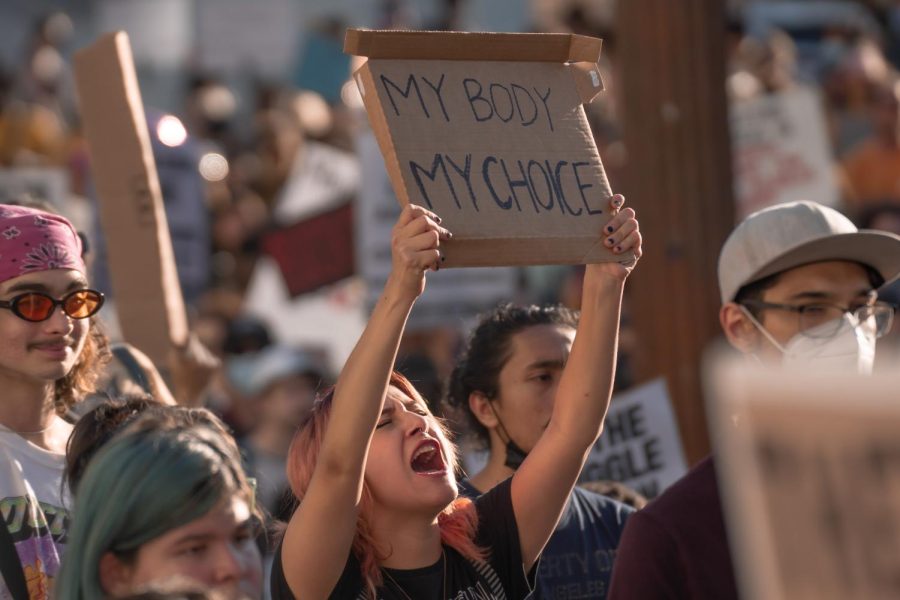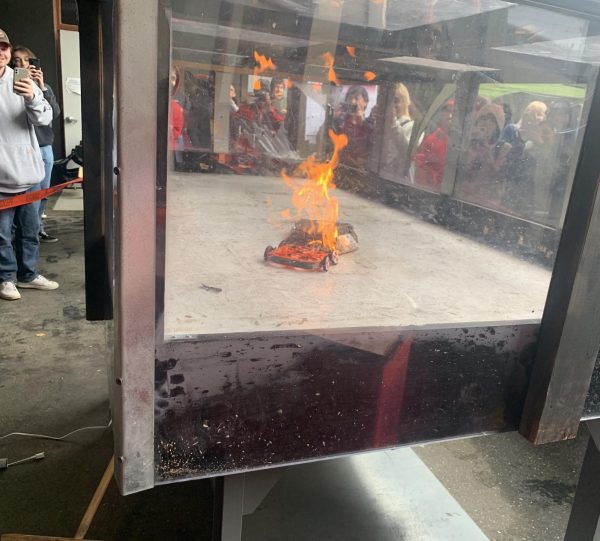Iranian blackouts: losing internet or morality?
Growing up, my parents emphasized the phrase, “Be aware of your surroundings, and always act like there is a potential for danger,” because they knew the kind of world I would have to traverse as a woman in a male-dominated society. One woman who suffered from this type of society was Mahsa “Jina” Amini.
Amini was allegedly beaten, arrested and later died after being stopped by Iran’s “morality police” on Sept. 16 for violating hijab laws, according to news reports. Officers released a statement saying that she died of sudden heart complications. However, her family called the authorities out and responded saying that she was in perfect health before her arrest.
Since Amini’s death, protests have started across Iran. Some protestors are calling for the fall of the Iranian Supreme Leader, Ayatollah Ali Khamenei. Other protestors, specifically women, are cutting their hair and burning their hijabs in the streets, a direct violation of laws passed after the 1979 Islamic Revolution.
According to a BBC article published on Sept. 21, these laws require all women to wear hijab and loose-fitting clothing that covers their arms and legs in public. Officers also have the right to stop women and assess their clothing. If they are found to be in violation of the laws, they can then be beaten, imprisoned and/or fined. Apparently, this gives the Iranian “morality police” the right to hurt, manipulate and even kill women. Imagine if this was your mother, sister, cousin, friend or girlfriend.
According to the Kurdistan Human Rights Network, at least 17 male, female and child protestors have died throughout the protests. The New York Times states that another rights group, Hengaw, says that at least 733 people have been injured and over 600 have been arrested across the Kurdish province. The Hengaw official website has since been restricted.
Since the start of the protests there have been internet blackouts in Iran. Netblocks, a London group that monitors internet access, says that network data can confirm a “…near-total disruption to internet service in parts of Kurdistan province in west Iran,” starting Sept. 19, and lasting up to Sept. 22. To think a city almost 3,300 miles from the Kurdistan province had to be the one to break the news of the illegal, above-and-beyond censorship.
Blackouts have been previously weaponized by the Iranian government during past protests for human and women’s rights. There have been off and on social media restrictions since the country’s 2009 election, with restrictions mirroring those of Russia’s.

Human Rights Watch states that the Russian government passed a law in 2021. The law restricts social media content that calls for young people to participate in unsanctioned protests, exaggerates the number of protestors and spreads false information about police violence at protests. In March, the Kremlin further restricted social media usage to limit the spread of information about the war in Ukraine.
Despite similarities, media coverage of the Russia-Ukraine War and the recent protests in Iran are unbalanced. Long before the start of the war, news outlets were doing wall-to-wall coverage, and many had heard something about the upcoming war.
Though the protests in Iran have not yet sparked a war, they’ve resulted in multiple injuries, arrests and deaths and are challenging decades old hijab laws and Iranian leadership. Despite these conditions, it seems like few know what is actually going on. Multiple Chico State students chose not to answer questions on the protests because they were worried about their lack of knowledge on the subject.
Possibly due to posts being restricted across social media, I didn’t see anything about Amini’s death or the following protests until at least two days after they started. Yulisa Reveles, a Chico State student and English literature major, was slightly familiar with the subject.
“All I really heard is that women are protesting for the right to not wear the hijab,” Reveles said. “I saw a video on the internet where they were throwing their hijab into a fire.”
In American culture, social media constantly plays a role in social and government protests. Outside of TikToks and reels that reveal your typical teenage dirtbag or goody two-shoes photos, social media can prove to be a highly influential tool.
According to a 2020 survey by the Pew Research Center, “Roughly a quarter (23%) of adult social media users in the United States – and 17% of adults overall – say they have changed their views about a political or social issue because of something they saw on social media …”
Some survey-takers specifically mentioned the Black Lives Matter movement and police brutality.
Media has also played a role in the protests against the overturning of Roe v. Wade, a prominent breach of women’s rights. Women have been fighting for equal rights such as voting, wages, respect and so on for years, and the overturn has significantly set us back.

On the surface, women’s struggles in the United States may not be as severe as those in Iran. However, upon closer examination, the two cultures may be more similar than initially thought.
Women in Iran fear getting beaten, arrested or fined for violating hijab laws, are not allowed to use contraception or abortion pills and face severe employment inequalities.
Women in the United States also face employment inequalities. Our right to have an abortion is now left up to individual, state legislature and we have to worry about being objectified, assaulted and/or raped in a society that still overvalues female silence.
The United States government has voiced their support of the Iranian protests and allowed tech firms to boost internet access. This seems to be a very minimal reaction given that our government touts our country as the world’s watchdog.
“…I think as a country we always find a way to get involved with other countries’ problems,” Reveles said. “And that’s a good thing if we go in to help, and help only, but that doesn’t always seem to be the case.”
Additionally, Acting UN High Commissioner for Human Rights, Nada Al-Nashif, has condemned the reported “unnecessary or disproportionate use of force against protesters,” and is urging Iran to “respect the right to peacefully exercise freedom of expression, assembly and association.”
The current protests in Iran are just the latest chapter in the fight for human and women’s rights. While I don’t condone our government inserting itself into external issues and calling it “help,” something does have to be done to aid Iranian citizens. The protests are evidence that people are unhappy with the social and government restrictions and reactions.
There has to be a way to influence a more modern mentality in Iranian laws without obliterating their culture.
Ariana Powell can be found at [email protected].



















Amber // Oct 12, 2022 at 7:14 pm
If you understand DNA, then you understand that a fetus is a separate person.
How is this overlooked?